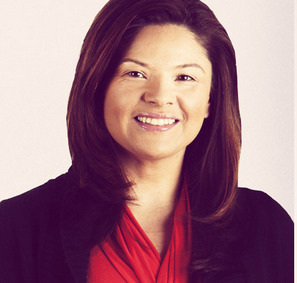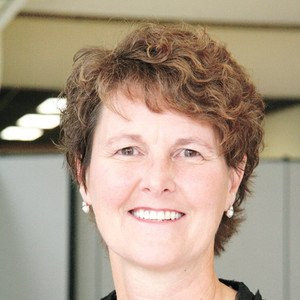It’s All About Education: Child Care Should Be a Major Focus in 2016
Wednesday, September 23, 2015
It’s only September 2015, and already our news channels are on high alert for the presidential election that is 13 months away. The candidates have no shortage of opinions on the economy, immigration, civil rights issues and education plans. Yet not one of them is talking about child care.
“I’m spending more on child care than I would on college tuition!” Although many parents say it jokingly, it’s actually often true. In 31 states and the District of Columbia, full-time child care costs more than tuition at a public college. In Rhode Island, for example, the average cost of child care is $12,262 per year, compared with an average cost of $10,992 for tuition and fees at a public college.
According to a report released by Child Care Aware of America, Rhode Island ranks 14th in a list of states with the least affordable child care for infants; 9th in least affordable care for a four-year old; and 25th in the cost of care for a school-aged child. Not surprisingly, New York is the least affordable state for all three categories of child care.
GET THE LATEST BREAKING NEWS HERE -- SIGN UP FOR GOLOCAL FREE DAILY EBLASTWhy is this important? First, over 12 million children younger than age 5 in the United States attend some form of child care each week. Second, access to quality child care impacts more than parents: employee absenteeism due to child care issues costs businesses more than $3 billion each year. Parents whose children are enrolled in high-quality, reliable child care centers often have higher engagement at work.
Lotte Bailyn, professor emeritus at the MIT Sloan School of Management notes that for young families, “Child care is so expensive that there is very little discretionary money for consumption. It may be one of the things contributing to the slowness of our recovery and pulling down demand.” Faced with the high costs, some parents choose to stay home with their young children instead, reducing both their family income and our workforce.
And of course, research has shown that there are huge benefits for children who attend high-quality early childhood education centers. Because children’s brains undergo drastic change between the ages of birth and three years, the experiences they have during those years can be critical. As mentioned in a previous column, for every dollar spent in early childhood, there is a return on investment of $8.59.
Last year, the Washington Post declared that “The U.S. ranks last in every measure when it comes to family policy, in 10 charts.” Examples cited include: the U.S. is one of only three countries to offer no paid maternity leave; the U.S. has high child care costs shouldered by parents alone; and our country has no ban on mandatory overtime, no mandate that workers have rest, and no national vacation policy. This lack of support for working families manifests itself in many ways.
In 2012, American mom Claire Lundberg wrote in Slate about her experiences as a working mother living in Paris. Because the French government provides inexpensive municipal child care, tax breaks for families who hire nannies, and universal free preschool beginning at age 3, Ms. Lundberg and her husband considered extending their stay there as ex-pats. These family-friendly policies have had a positive impact on French society: over 80% of French women work, compared with only 60% of American women.
In an article published in Knowledge at Wharton, professor Stewart Friedman says, “When we compare what we do as a nation to what other developed countries do in terms of child care, it’s embarrassing and it’s tragic.” In 1971, Congress passed the Comprehensive Child Development Act, which would have created a system of federally funded child care centers throughout the country, with fees based on family income. However, President Richard Nixon vetoed the bill, and 44 years later, here we are.
The Center for American Progress (CAP) has just published A New Vision for Child Care in the United States, which proposes a $40 billion-per-year tax credit, the bulk of which would pay for center-based child care for children younger than 3 years. Low and middle income families would receive tax credits based upon their income levels, with those earning the least amount of money receiving up to $14,000 per year. Parents would contribute up to 12% of their income towards child care costs on a sliding scale.
According to Nancy Rothbard, professor of management at the University of Pennsylvania’s Wharton School of Business, the fact that the U.S. lags far behind other countries in family-friendly policies is a complicated problem. “We can’t just wave a wand and fix just one [part of] the problem. It is an issue that is so deeply woven into the way we tax, the way we approach business, the way we use community resources and the kind of safety net that we provide.”
Yet that doesn’t mean we shouldn’t be talking about it. The CAP has proposed one solution, kicking off what should become a national conversation. We are a developed country and a world leader, and as such, it is unacceptable that the United States has the third highest child care costs for parents of any country in the Organization for Economic Cooperation and Development (OECD). We can do better for our children and for our economy.
Lauri Lee is an independent consultant with over twenty years of experience in both public and private education, with learners from infants through adults. With experience in teaching, marketing, communications, social media, development, admissions, and technology, she is able to synthesize many of the issues facing our educational system today. She lives in Providence, RI with her family, a big dog, and a small cat. She blogs at http://www.AllAboutEducation.net and you can follow her on Twitter at @fridovichlee.
Related Slideshow: RI Experts on the Biggest Issues Facing Public Education
On Friday November 22, the Hassenfeld Institute for Public Leadership at Bryant University, the Latino Policy Institute of Roger Williams University, the Rhode Island Association of School Committees, the Providence Student Union, and RI-CAN: Rhode Island Campaign for Achievement Now will host Rhode Island leaders in the public and nonprofit sectors for a symposium on "the civil rights issue of the 21st century, adequacy and equity and the State of Education in Rhode Island."
Weighing in on the the "three biggest factors" facing education in the state today are symposium participatnts Gary Sasse, Founding Director of the Hassenfeld Institute for Leadership; Christine Lopes Metcalfe, Executive Director of RI-CAN; Anna Cano-Morales, Chairwoman of the Board of Trustees, Central Falls Public Schools and Director, Latino Policy Institute at Roger Williams University; Tim Duffy, Executive Director, RI Association of School Committees; and Deborah Cylke, Superintendent of Pawtucket Public Schools.
Related Articles
- It’s All About Education: After School Programs Make a Difference
- It’s All About Education: How Vaccination Affects Schools – and Society
- It’s All About Education: Changing Lives with School Lunches
- It’s All About Education: How Breakfast Could Help Close the Achievement Gap
- It’s All About Education: Choosing the Right School for Your Child
- It’s All About Education: Can Education Drive Social Change?
- It’s All About Education: High-Quality Early Learning: Necessary For All
- It’s All About Education: The Benefits of Intergenerational Programs
- It’s All About Education: Why So Many Choose Progressive Education
- It’s All About Education: Could Competency-Based Learning Be the Wave of the Future?
- It’s All About Education: Learning Life Skills at Hope High
- It’s All About Education: The Most Wonderful Time of the Year?
- It’s All About Education: Just Let Them Play
- It’s All About Education: What Kids Learn from Sports
- It’s All About Education: Why Summer Vacation Should Be Just That
- It’s All About Education: The Arts, Education, and Transformation
- It’s All About Education: A Broader Definition of Education
- It’s All About Education: Reading for Pleasure Predicts Academic Success
- It’s All About Education: Divine Providence: Engaging Community
- It’s All About Education: Kids Learn Through Experience
- It’s All About Education: School Choice - Vouchers and Tax-Credit Scholarships Don’t Pay
- It’s All About Education: Failure to Launch - It’s Not Just a Movie
- It’s All About Education: Making a Commitment to Rhode Island’s Children
- It’s All About Education: How Poverty Impacts Brain Development and Learning
- It’s All About Education: Re-Imagining Our Educational System








